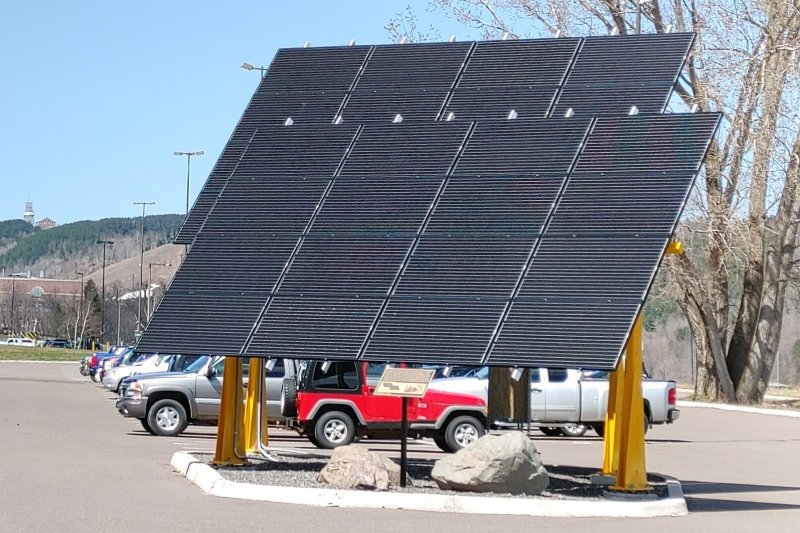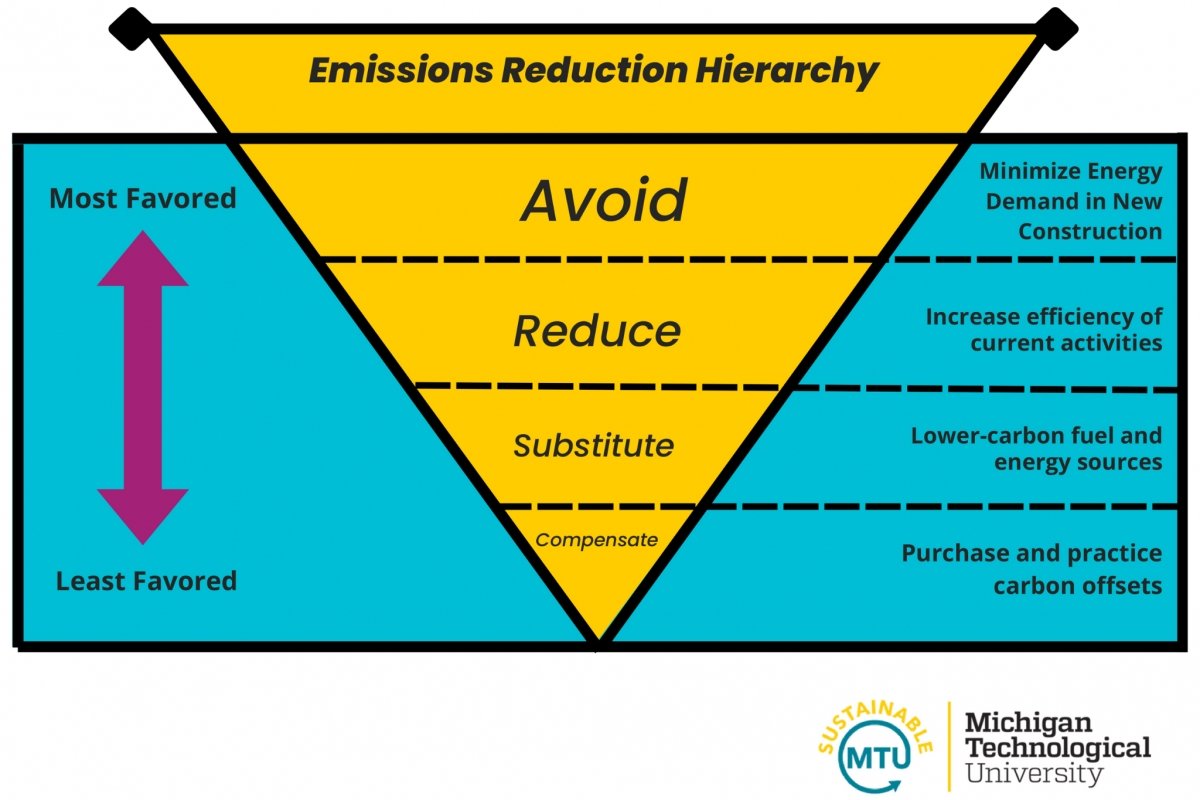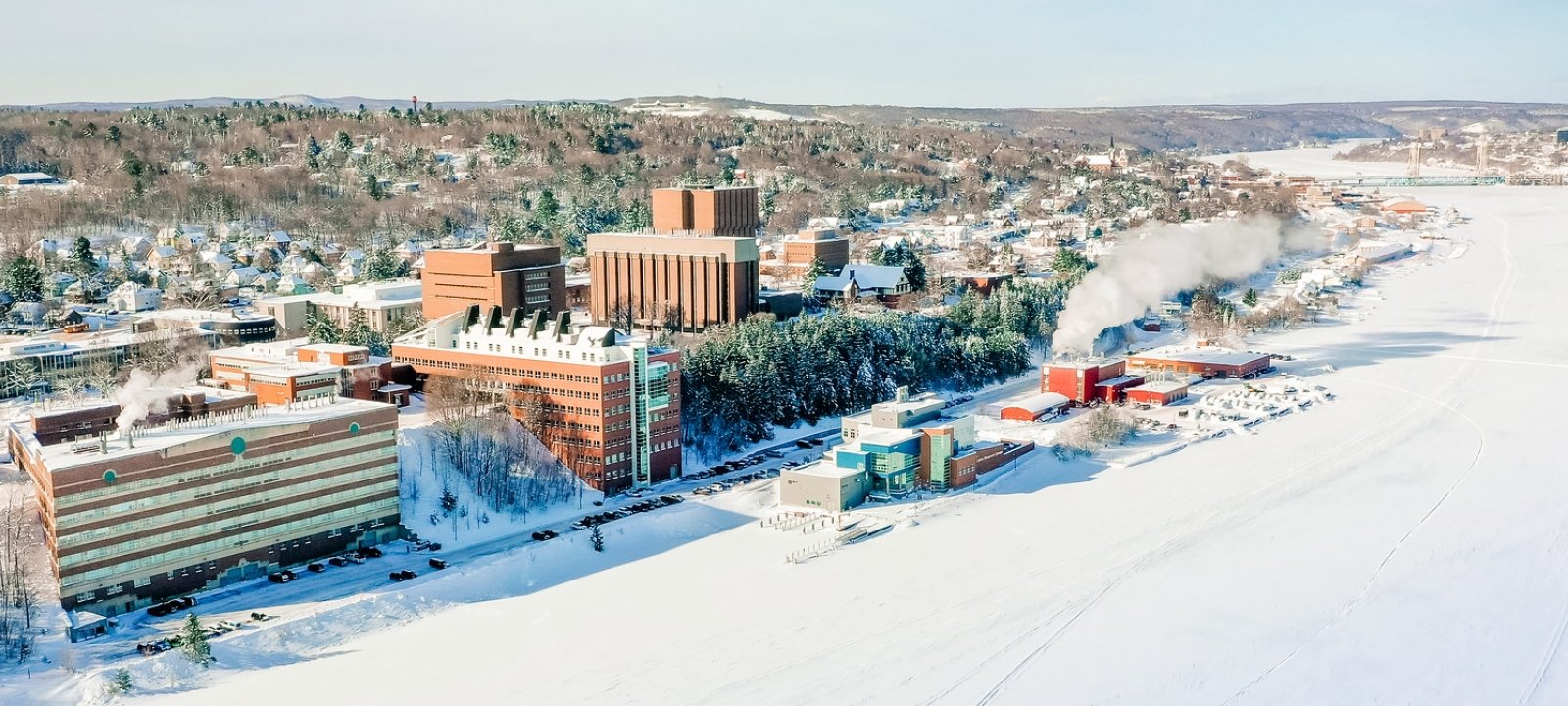Michigan Tech is committed to continuous reduction of our carbon footprint and energy use. Through strategic management, we are achieving this in a revenue positive way, reducing our utilities cost while improving our environmental performance through a three-pronged approach: improving the energy efficiency of existing buildings, minimizing the energy demand in any new construction or major remodeling projects, and greening the sources of our energy through increasing renewable energy production and contracting for fiscally-responsible low-carbon energy sources.
-
50%of MTU's purchased energy is from renewable wind power through 2025.
-
$3.6Msavings in energy expenditures over the life of our current wind power contract.
-
18Mkilowatt-hours of annual green power used.
-
25%decrease in campus carbon footprint from 2016 to 2021.
Evergreen Energy Fund
In 2023, Michigan Tech launched the Evergreen Energy Fund to tackle projects that improve energy efficiency in our buildings. Example projects include installing LED lighting and controls, improving insulation, and updating HVAC systems. A portion of measured cost savings resulting from these projects will return to the fund to support future projects. In the first year of the Evergreen Energy Revolving Fund, $150,000 in campus energy efficiency investments yielded $56,000 in utility rebates, an average ROI of two years, and a total lifetime utility savings of nearly $400,000. These projects also reduce our greenhouse gas emissions by 466 tons annually, equivalent to roughly 60 US homes.
Design and build for the future
Michigan Tech is growing. Our goal of enrolling 10,000 students by 2035 will require extensive new construction and renovation of existing buildings outlined in our 2022 Campus Master Plan. We are committed to LEED (Leadership in Energy and Environmental Design) principles that will minimize the environmental impact and maximize the wellness of building uses through our campus improvements. The H-STEM Complex, completed in spring of 2024, demonstrates that commitment, earning a prestigious LEED Gold certification.

Find more information on MTU's Energy Management Strategies below:

Emissions Reduction Hierarchy: From Most Favored to Least Favored1
- Avoid: Minimize Energy Demand in New Construction
- Reduce: Increase efficiency of current activities
- Substitute: Lower-carbon fuel and energy sources
- Compensate: Purchase and practice carbon offsets
1Blue diagram with a yellow inverted triangle that places a hierarchy on avoiding and minimizing energy demand, followed by reducing energy inefficiency, followed by substituting with better energy alternatives, and lastly followed by compensation through carbon offsets.
